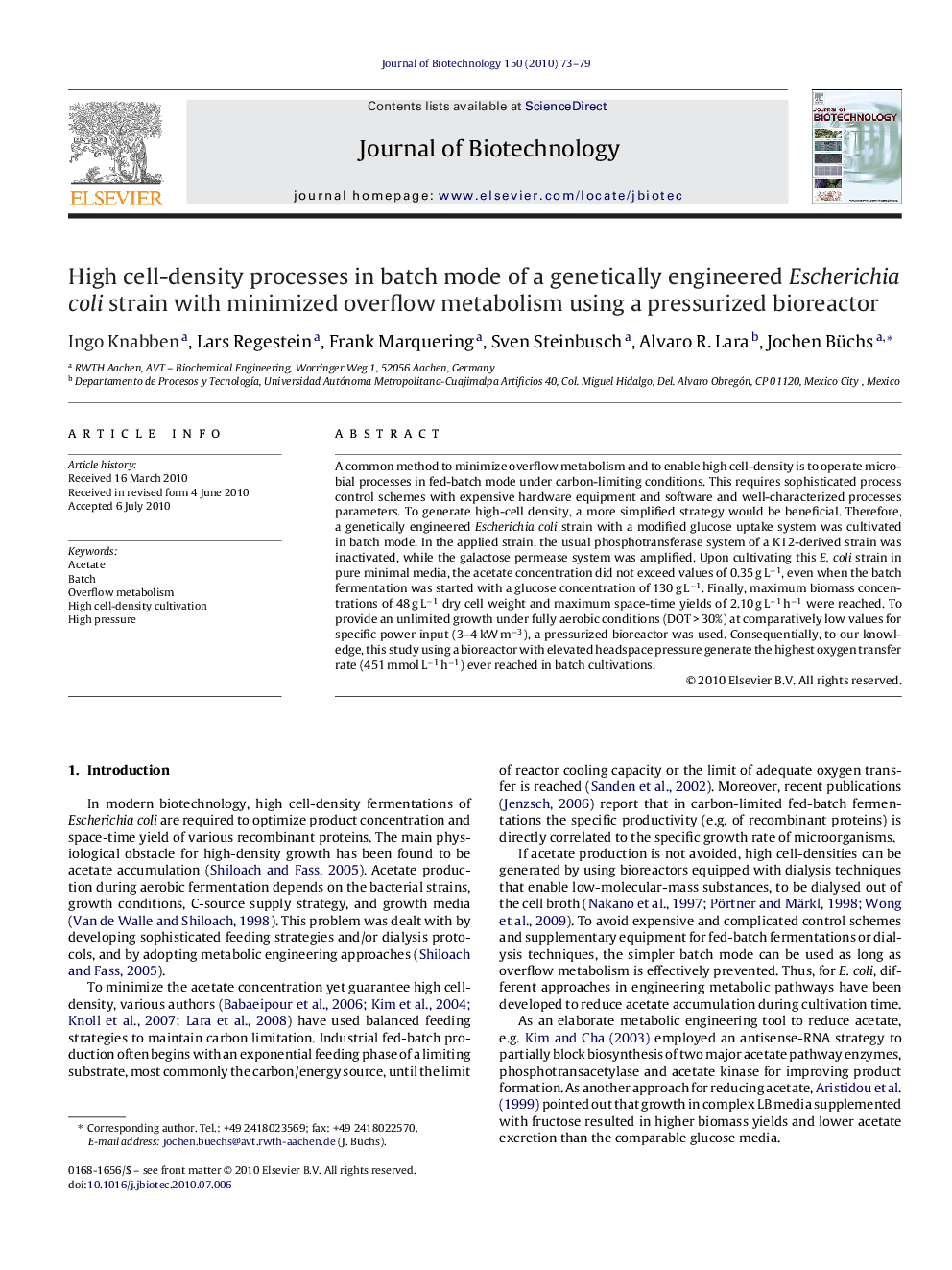| Article ID | Journal | Published Year | Pages | File Type |
|---|---|---|---|---|
| 24193 | Journal of Biotechnology | 2010 | 7 Pages |
A common method to minimize overflow metabolism and to enable high cell-density is to operate microbial processes in fed-batch mode under carbon-limiting conditions. This requires sophisticated process control schemes with expensive hardware equipment and software and well-characterized processes parameters. To generate high-cell density, a more simplified strategy would be beneficial. Therefore, a genetically engineered Escherichia coli strain with a modified glucose uptake system was cultivated in batch mode. In the applied strain, the usual phosphotransferase system of a K12-derived strain was inactivated, while the galactose permease system was amplified. Upon cultivating this E. coli strain in pure minimal media, the acetate concentration did not exceed values of 0.35 g L−1, even when the batch fermentation was started with a glucose concentration of 130 g L−1. Finally, maximum biomass concentrations of 48 g L−1 dry cell weight and maximum space-time yields of 2.10 g L−1 h−1 were reached. To provide an unlimited growth under fully aerobic conditions (DOT > 30%) at comparatively low values for specific power input (3–4 kW m−3), a pressurized bioreactor was used. Consequentially, to our knowledge, this study using a bioreactor with elevated headspace pressure generate the highest oxygen transfer rate (451 mmol L−1 h−1) ever reached in batch cultivations.
